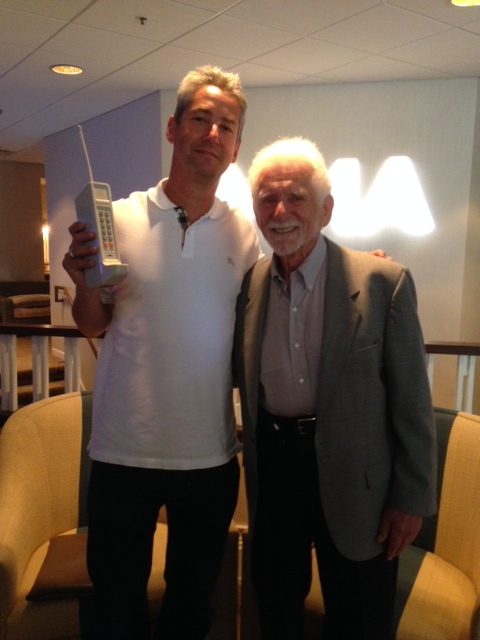In a subway car or on a mobile device, there is getting close. And there’s getting too close.
It didn’t have the stench or uneasy feeling of that “Close Encounter of the D Train” kind, but a moment at this week’s CEO/CMO Summit put on by the Mobile Marketing Association had even the hardened of marketers turning up their noses.
xAd took to the stage to unveil a new product that gets marketers to “the intersection of places and people.” Within Footprints, we can see a real-time map showing where consumers are. An example used showed how a toothpaste brand can serve up an ad to someone that it knows at the dentist’s office.
There was significant pushback during the presentation and afterward with several noting that a dentist’s visit is off limits for brands even if the technology is there to reach out to a mobile user before, during or after a deep clean or root canal.
The topics of privacy, permission and personalization led if you gauged the 2 ½ day conference in Hilton Head on time spent.
Already a leader in mobile interaction, ESPN sought answers as to whether it could – or should – seek to opt fans in for the short term when they enter a ballpark. Benefits could include access to exclusive content, upgrades to seats, and meet and greets with announcers, among other things. This one seemed easy to answer – why not?
Some in attendance lamented the lack of cookies in mobile. Cameron Clayton of The Weather Company (formerly The Weather Channel) said that location is “like a mobile cookie”. But he admitted that many consumers appreciate the absence of cookies and don’t believe that giving up one’s location to get local weather gives license to advertisers. The company gets thousands of complaints a day from those offended by ads tied to location.
Martin Cooper, called “the father of mobile” for his invention of the first cellphone, said that we’re headed for the ultimate in personalization.
“In health care, instead of curing disease, we should be preventing disease,” Cooper told us. “The annual physical exam is essentially worthless because there is no baseline. Soon we’ll be able to have a physical examination every minute and anticipate a disease before it happen.
“In a few years, we’ll be able to sense a few cancer cells in the body and zap them before the cancer spreads. Every disease will be curable.”
Whether that personalization comes through wearables remains to be seen.
Earlier at the event, Pebble’s head of partnerships and business development made an unconvincing argument for the need for wearables today.
Said Asad Iqbal: “You cannot expect consumers to always be engaged on their mobile device.”
That was a head-scratch for me given smartphone stats and consumer behavior. Pebble’s premise for a wearable came off as a luxury, giving users redundant access and speed when it may not be needed.
On Twitter, a reaction to Iqbal’s comments was that wearables don’t, at least for now, solve a problem.
The MMA opened the conference by teasing the notion that a 16% share of the marketing spend for mobile could bring companies like Coca-Cola an additional $1 billion in market cap. Most brands spend in the single digits and have yet to be convinced that more is justified.
Still, we learned lots from major brand marketers.
Addressing questions about the ROI on mobile, Andrew Flack, Hilton Worldwide’s Vice President - Product Marketing & Customer Insights, said that just as Hilton knew when it was time to put TV’s and air conditioning in rooms, it knows that “now is the time for mobile.”
Flack’s advice? “Be prepared to not be perfect. In a year, three or four things will work. One will be OK. One will be a learning.”
Also, contrary to what one might expect, there was extensive talk about success through text messaging (Perry Ellis and Cosi were the most vocal) and nary a mention of beacons.
While not smelling like a rose, mobile’s future seemed brighter than when we got on planes traveling to Hilton Head.
(article first appeared on Mobile Marketer - http://www.mobilemarketer.com/cms/opinion/columns/18245.html)
























